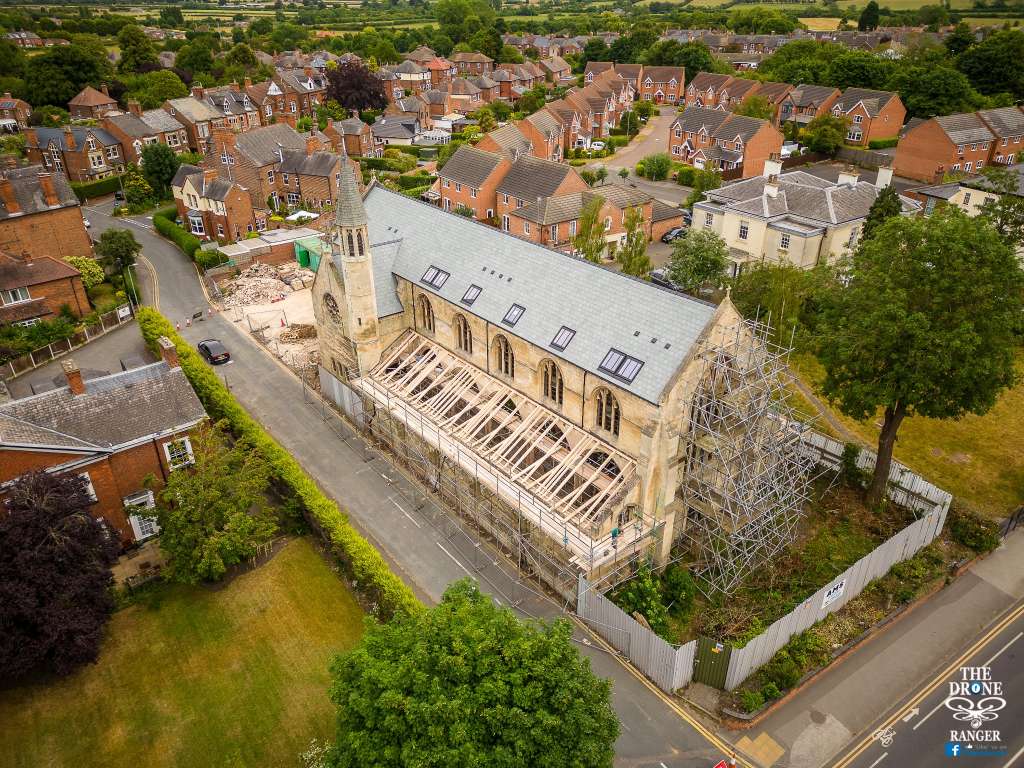BaR news Round-up - August 2022
The addition of 60 new entries to the Buildings at Risk register has taken the number of entries to 1,239. To ensure that all of the new entries can be viewed in one place, there is a full list of entries with a photo gallery which is accessible to all visitors to our website. Click here to view the full list.
In addition, July saw the ongoing work to update the existing entries on the register, starting to move onto the East of England. Here we highlight some encouraging stories of the work we have been doing throughout July.
Frogmore House, Watford, St Albans, Hertfordshire AL2 2LL
This 1716 red brick house was converted in the 20th century into flats. Features are typical for this type of building; a formal 5-bay range to the road and south fronts with gauged brick flat heads. There is some evidence of modification in the 19th century, including new picture windows. The early 18th century features continue, with a fine doorcase with fluted pilasters on panels, and a Doric frieze above the door. The whole site was bought by the then Watford and St Albans Gas company in the early 1900s. The house was first used for the manager and was turned into flats in 1947. Still owned by British Gas, it was left derelict despite its Grade II* listing.
We were pleased to hear that Frogmore House was restored during a £2 million project, since then it has been Highly Commended by both the 2021 Georgian Group Awards and the 2022 Civic Trust Awards, and the building is now used as office spaces. According to the architecture firm responsible for the restortion, Giles Quarme Architects, ' As part of the redevelopment of the wider site the building has been restored and structural failure, water ingress and dry rot have all been tackled. Historic joinery - windows, doors, staircase balusters and panelling - has been repaired or where necessary re-instated, and the doorcase, stolen in 2009, recovered and put back'.
Spring Grange, Wood End, Ardeley, near Stevenage, Hertfordshire SG2 7BB
This delightful building is Grade II listed. There is a late 16th-century wing and the main building is a 17th-century replacement for the original medieval hall. This main section has a large central chimney and lobby entry. Weatherboarded with steep roofs tiled in old red tiles, it is potentially a highly attractive building. However there is likely to be some damp and rot, the weatherboarding is in poor condition and the roof requires attention and doors and windows need repairing. This could involve substantial work.
SAVE was informed by the conservation officer that thankfully repairs are now underway as part of an enabling development scheme. Application 3/17/2823/LBC was granted for refurbishment works and a small rear extension and we eagerly await future updates.
Church of St Alban, Holly Crescent, Retford, Nottinghamshire DN22 6AY
The Church of St Alban is an elegant early 20th-century church built between 1902 and 1913 by Charles Hodgson Fowler of Durham. The west end was completed in 1931. The church is designed in a simple perpendicular style with an enchanting spirelet and it is built in a fine limestone ashlar.
Unfortunately, the Church was gutted by fire in 2007 and stood as a ruin since then. It is located to the east of the centre of this pleasant market town on the main road out towards the A1 which runs to the east of the town. After being up for sale for some time, the ruined church's future remained uncertain.
However, we were pleased to hear in late July that repair work is now well underway to convert the church into housing and a new roof with Velux windows is currently being installed. Please see here for an aerial view of the progress. Thanks to the Drone Ranger for the images.



